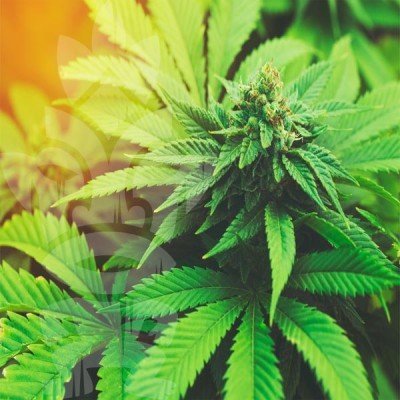Don't have an account?
Register NowYou have to add to cart at least 5 bottles or any program to make checkout.
- BlogRookie Guide: The 10 Essentials of Cannabis Cultivation
Rookie Guide: The 10 Essentials of Cannabis Cultivation
Published: March 24th, 2016
Categories:
Cannabis Cultivation
Growing weed is rather simple and easy to learn. The three most important things you need to bring to the table are following: The willingness to read about growing, patience and passion. This guide will walk you through the process and provides some basic knowledge about cannabis cultivation for you to start with.
1. PERSONALITY AND GROWING
Find out if growing weed fits your personality. In most countries, the political development is not at the point of fully acknowledging the recreational and medicinal values of this plant. There is the very small chance that your door gets kicked in, and you will have to deal with legal consequences. Can you deal with a situation like this? Be honest with yourself. It is more important to get a good night’s sleep than to grow cannabis.
If you are seeking the medicinal effects of cannabis, growing your own is often the safest alternative. It can be an additional option in pain therapy and helps to treat various diseases.
Overachievers and perfectionists, you will have a hard time at the beginning. The best way of seeing your first growing attempts is to see them as experiments. The more relaxed you are about it, the better. It takes a good amount of effort and passion, though.
2. GROWING CANNABIS IS EASY TO LEARN BUT HARD TO MASTER
The process of excellent cannabis cultivation can be learned by everyone. All you need is a decent amount of time to do your research on the web, and the willingness to learn.
Many skilled growers seem to confuse rookies at the beginning, by making things too complicated. Techniques to maximize yields are very interesting but shouldn’t be your biggest concern. Why make things more complicated than they already are? Simplicity is “key” sometimes.
3. OUTDOOR AND INDOOR
The biggest question you have to ask yourself in the beginning is: Outdoor or indoor? There are many pros and cons for both sides. The most significant argument for outdoor growing is the fact that plants and grower are not directly connected. This can help to reduce legal risks. At the same time, this exact same argument can be regarded as a main benefit of indoor growing. Being close to your plants allows intense care and close monitoring. This is a tough decision to make. When in doubt, try both.
Outdoor yields can be huge, just needing sunlight and some fertilisation. This way is the most sustainable way to produce your recreational or medicinal buds.
Indoors, you need a good amount of technical equipment to imitate the environment that nature provides for free. Growing indoors is also a great way to produce high-quality cannabis blossoms – but often more expensive.
There is no right or wrong answer here. It depends more on preference and style.
4. GROW AREA AND SIZE
When growing outdoors, a remote location is what you are looking for. If you are ambitious, try to calm yourself. If you oversize your grow too much, especially outdoors, negative consequences, such as increased risk of discovery, can overshadow huge piles of dank buds. The more the better? Not always. Try to find your personal sweet spot between size and risk.
Outdoors, be very careful about what you are doing and who sees you doing it. Learn from guerrilla warfare, Boy Scouts, survival experts. Knowledge is always helpful. It can be beneficial if you have a legit reason why you are wandering around in nature, all by yourself.
Bring a dog leash, binoculars and a book about birds, a huge camera, or a fishing rod, when rivers or lakes are nearby. Don’t leave obvious tracks behind. Take different paths and have an exit scenario in mind. In general: Be clever about it. It can be quite pleasurable, sharing a little secret, just with mother earth.
If you want to grow indoors, try to focus on choosing the right tent, or growbox. Standard sizes are everything below 120 cm x 120 cm. Anything bigger than this will produce a lot of weed that you have to deal with in the end. By the way, it is highly advisable to keep your product to yourself.
No tell, no smell, no sell! The three golden rules of successful home-growing.
5. AIR MOVEMENT AND EXTRACTION
When growing indoors, a lot of challenges arise from the field of air movement, filtering, and extraction. When planning your small “weed-production-facility,” plan everything around your air system. You basically need to establish three different types of air movement. First, the air inside of your tent needs to circulate. Second, fresh air needs to access your tent. Third, used and “aromatised” air needs to leave the tent, being odour-filtered at the same time.
When choosing components like tube vents, carbon-active filters and fans, don’t be cheap. Oversize your air system a little bit to be able to react to different climates.
Having a rather powerful air system that can extract a lot of air from your tent gives you the possibility to run it on different velocities. When it’s hot outside or smell issues occur, this can be very beneficial. Aim for 25 - 28 °C grow-room temperature. Everything over 30 °C won’t do you any good. You want: Little noise, much power!
6. LIGHTING
The question of the “right” lighting solution for your grow, is closely connected with the air system you want to install in your tent. If you want a lot of production, you need a lot of power. Power often means high wattages and heat being generated. Your lighting has to match your air system. You can do research about this on the web.
It doesn’t make any sense to grow with a 600 watt HPS lamp in a 60 x 60 cm tent, only being able to extract 100 m³ of air/h. All components of your “growing-facility” have to match each other to get good results. The average home-grower uses high-pressure sodium lamps (HPS) with wattages between 250 and 600 watts.
If you like high-tech, consider LED-lighting. Good panels emit a colour spectrum that is specifically tailored to plant’s needs. LED panels are air cooled and run with little heat. You might need to exchange less air making it all more energy efficient.
7. METHOD, MEDIUM, AND FERTILIZATION
There are tons of different individual methods to grow this plant. Once again, try to keep it simple. Grow with soil in the beginning instead of installing fully automated high-tech systems. This fun stuff can wait a little bit, until you are confident with growing in soil.
You have to make up your mind if you want to grow organic, or “conventional”. When you grow conventionally, you feed your plant with a mineral-based nutrient solution. You can be very precise with dosages of fertilisers and the plant will react very fast. Growing with mineral-based fertilisers can be seen as the “Heisenberg-Method” of growing. Precision often results in high-quality.
The more sustainable way to grow is organic. High yields and a premium, organic product can be harvested when growing organic. It doesn’t make much sense to be overly precise about the amount of organic fertilisers. Don’t get me wrong, the dosages of fertiliser are still very important. The bigger challenge is to find the right dosages in the beginning.
Growing organic means that you do not directly feed your plants, you feed the microorganisms in your soil. These different types of microorganisms process your “food,” and provide nutrition for your plants. Dialing in the right amount of organic fertiliser is a thing you learn over time. It comes automatically when you watch and study your plants. The best thing to do is: Chill, watch, read.
8. WATER
Besides sunlight, oxygen, and CO2, water is desperately needed to get photosynthesis up and running. If you want to do it “Heisenberg-Style”, try to find the website of your local water supplier. They publish an analysis of their water quality on a regular basis, probably not having highly interested stoners in mind. This is some valuable information because you can use this data to do some fine tuning to your fertilisation scheme. Especially when growing conventionally, mineral-based.
If the water is too hard, meaning that the amount of dissolved minerals is rather high, you can cut this water with rain water or osmosis water. Sometimes problems can arise when very hard water and larger amounts of fertilisers hit each other. When using tap water, let it sit in a bucket or larger container for at least 24 hours. Chloride and other undesired stuff partly exit the water this way, and this time will allow them to evaporate.
9. PH AND EC
Get a good, reliable pH-meter. Get a good, reliable EC-meter. Just do it. The pH value of the soil needs to be in the right range, and high EC-values can lead to over-fertilisation. It is best to do some further readings on pH and EC (electrical conductivity).
Especially if you choose to grow with mineral-based fertilisers, you need to closely monitor pH and EC values. When growing organic, you don’t need to pay too much attention to this. You will find lots of discussions on various cannabis platforms about this. Again, absorb all the knowledge you can.
10. SAFETY
Let’s talk about safety for a second here. Nobody wants to see people going to jail for cultivating a plant. When growing cannabis, do everything you can to prevent this. Here are some basic tips.
Do not tell your friends about it! Only tell people when you are 110% sure that this sensible information is in the right hands, and you have no other option. Be careful with broken-hearted ex-girlfriends/boyfriends. Emotional pain can cause weird things to happen.
Growing is not to boost your self-esteem, growing is about producing beautiful buds. You give away far more power than you gain, by telling people. A shut mouth doesn’t catch flies!
Could someone potentially see the light from outside? Check. Carbon filter working properly? Check. Are there lots of stoners coming over on a daily basis? Check.
The best advice that can be given is: Be yourself. Be inconspicuous. Live your normal life.
Greeting your neighbours is also essential when growing cannabis. Try not to be the guy in the apartment complex everybody hates. Be the polite and friendly citizen you are so that you do not arouse unwanted attention.
Ok, you got this. Have fun smoking premium home-grown cannabis for the rest of your life!





